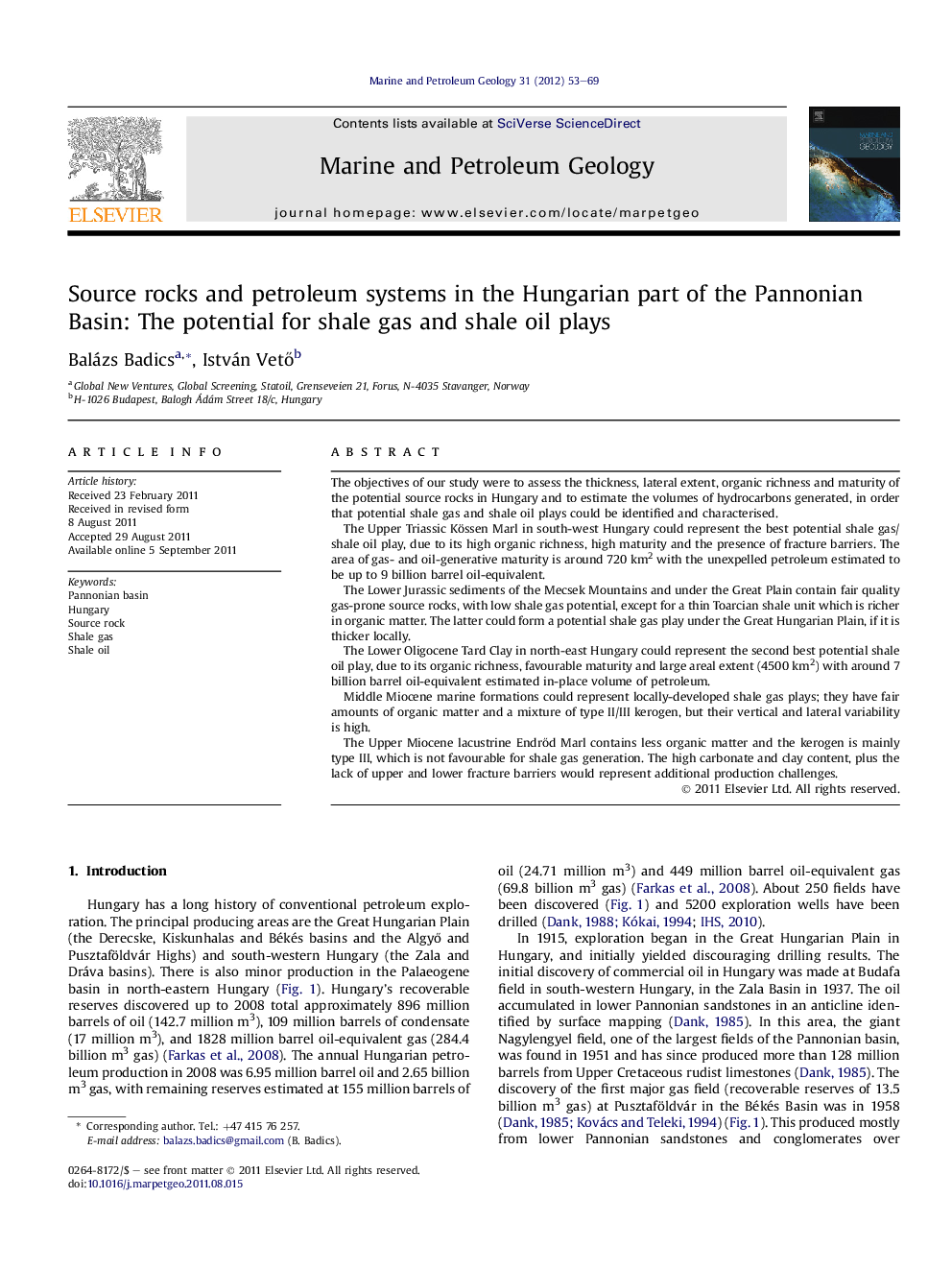| کد مقاله | کد نشریه | سال انتشار | مقاله انگلیسی | نسخه تمام متن |
|---|---|---|---|---|
| 4695935 | 1351645 | 2012 | 17 صفحه PDF | دانلود رایگان |

The objectives of our study were to assess the thickness, lateral extent, organic richness and maturity of the potential source rocks in Hungary and to estimate the volumes of hydrocarbons generated, in order that potential shale gas and shale oil plays could be identified and characterised.The Upper Triassic Kössen Marl in south-west Hungary could represent the best potential shale gas/shale oil play, due to its high organic richness, high maturity and the presence of fracture barriers. The area of gas- and oil-generative maturity is around 720 km2 with the unexpelled petroleum estimated to be up to 9 billion barrel oil-equivalent.The Lower Jurassic sediments of the Mecsek Mountains and under the Great Plain contain fair quality gas-prone source rocks, with low shale gas potential, except for a thin Toarcian shale unit which is richer in organic matter. The latter could form a potential shale gas play under the Great Hungarian Plain, if it is thicker locally.The Lower Oligocene Tard Clay in north-east Hungary could represent the second best potential shale oil play, due to its organic richness, favourable maturity and large areal extent (4500 km2) with around 7 billion barrel oil-equivalent estimated in-place volume of petroleum.Middle Miocene marine formations could represent locally-developed shale gas plays; they have fair amounts of organic matter and a mixture of type II/III kerogen, but their vertical and lateral variability is high.The Upper Miocene lacustrine Endrőd Marl contains less organic matter and the kerogen is mainly type III, which is not favourable for shale gas generation. The high carbonate and clay content, plus the lack of upper and lower fracture barriers would represent additional production challenges.
► Palaeozoic sediments have been metamorphosed, no potential.
► Upper Triassic Kössen Marl best potential shale gas/oil play in 720 km2.
► Lower Oligocene Tard Clay second best shale oil play in 4500 km2.
► Middle Miocene marine sediments locally-developed shale gas plays.
► Upper Miocene lacustrine Endrőd Marl low potential.
Journal: Marine and Petroleum Geology - Volume 31, Issue 1, March 2012, Pages 53–69